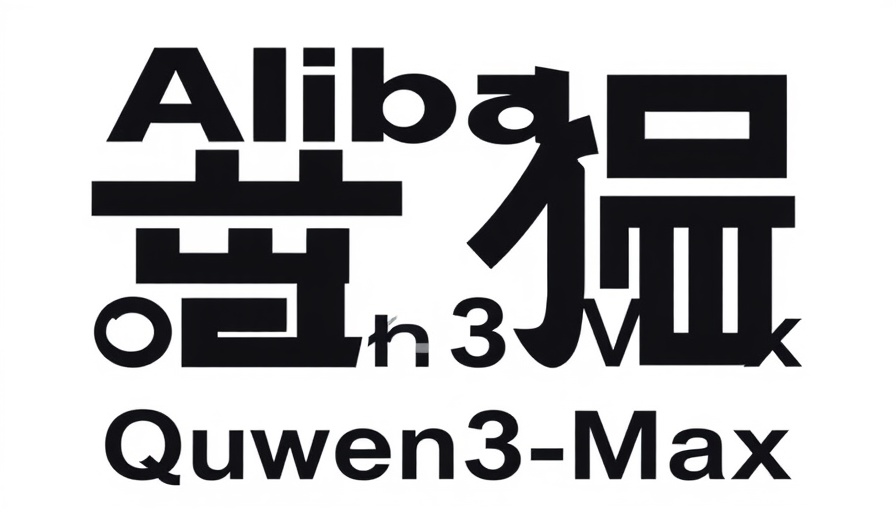
Alibaba's Qwen3-Max: Revolutionizing the AI Landscape
Alibaba has officially launched its latest flagship model, Qwen3-Max-Preview, marking an impressive milestone in the realm of artificial intelligence. With over one trillion parameters, this model is not just an upgrade; it's Alibaba's largest and most advanced language model to date. Designed for optimal performance, Qwen3-Max offers a context window of up to 262,144 tokens, far surpassing many current models and signaling a significant leap in technology.
The Significance of Size: What Does a Trillion Parameters Mean?
In the world of large language models (LLMs), size does matter. With Qwen3-Max boasting more than a trillion parameters, it stands on the shoulders of giants. This expansion reflects Alibaba's commitment to remaining at the forefront of AI development. While many companies pivot towards smaller, more energy-efficient models, Alibaba's focus on a larger model hints at innovative new capabilities, particularly in reasoning and complex task execution.
A Competitive Edge: How Qwen3-Max Stacks Up
Performance benchmarks reveal that Qwen3-Max doesn't just hold its own—it excels. Competing against other leading models like Claude Opus 4 and Kimi K2, it has demonstrated superior results across various tests, including reasoning and coding challenges. These benchmarks make it an attractive option for small and medium-sized businesses (SMBs) looking to leverage advanced AI for competitive advantage.
Understanding Its Pricing Model: Affordability Meets Functionality
Pricing can often be a deal-breaker for SMBs considering advanced AI tools. Alibaba Cloud's tiered token-based pricing model is designed with flexibility in mind. While the initial costs per million tokens are relatively low for small-scale tasks, businesses must plan for potential increases as their usage grows. This dynamic pricing model reflects real-world use, enabling companies to scale their AI utilization according to their needs.
Access and Innovation: The Impact of Closed Source
Unlike its predecessors, Qwen3-Max is not available as open-weight, which may raise eyebrows in the research community. Being exclusively accessible via APIs and partner platforms suggests that Alibaba is steering its model more toward commercialization. While this might limit broader grassroots adoption, it underscores the strategic pivot towards business-centric applications of AI.
Boosting Business Growth: Why Small and Medium-Sized Businesses Should Care
The advent of Qwen3-Max offers significant opportunities for SMBs. By tapping into advanced AI capabilities, businesses can streamline operations, enhance customer interactions, and even automate tedious tasks. This technology not only fosters efficiency but can also play a crucial role in boosting revenue streams. As familiarity with AI grows, integrating such models can provide a competitive edge over rivals who may not leverage these advancements.
Future Trends: What Lies Ahead for AI?
As we look to the future, the trajectory of AI modeling suggests a fascinating dual trend. On one hand, the push for more compact and efficient models will continue, as environmental considerations shape technology. On the other, substantial models like Qwen3-Max will persist in pushing boundaries, especially where complex problem-solving capabilities are necessary. It will be critical for businesses to adapt to these evolving dynamics.
Conclusion: Embrace the Future of AI Technology
The launch of Qwen3-Max marks a pivotal moment in the landscape of AI. For small and medium-sized businesses looking to innovate, this model presents a wealth of opportunities. Understanding its capabilities and pricing will enable businesses to strategically integrate AI into their operations. As you explore the potential of Qwen3-Max, consider how it can transform your business practices toward greater efficiency and productivity.
Ready to take your business to the next level with AI? Explore Alibaba's Qwen3-Max and see what innovative solutions it can offer!
 Add Row
Add Row  Add
Add 



Write A Comment